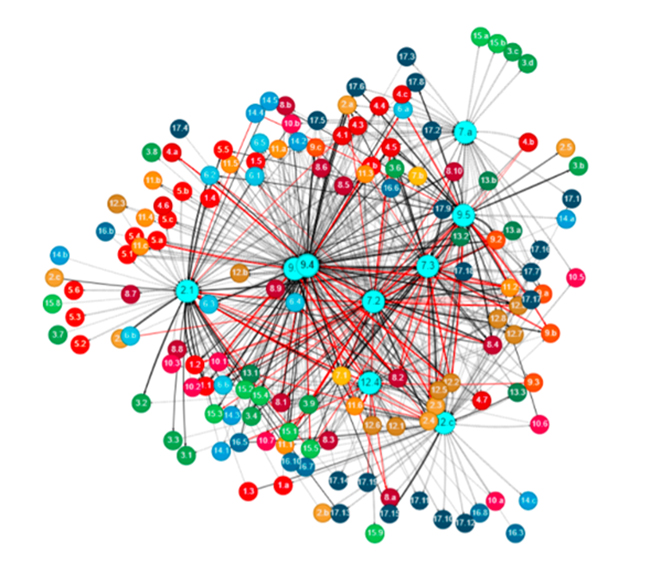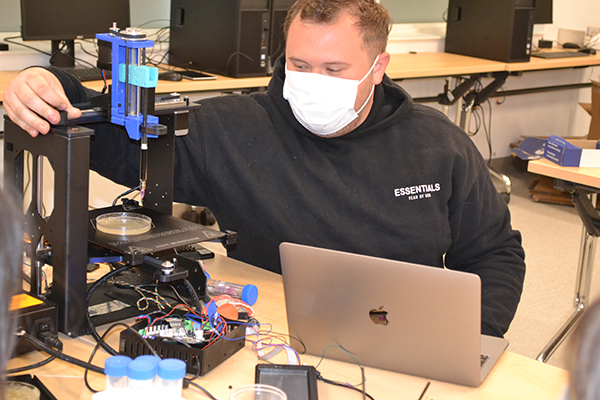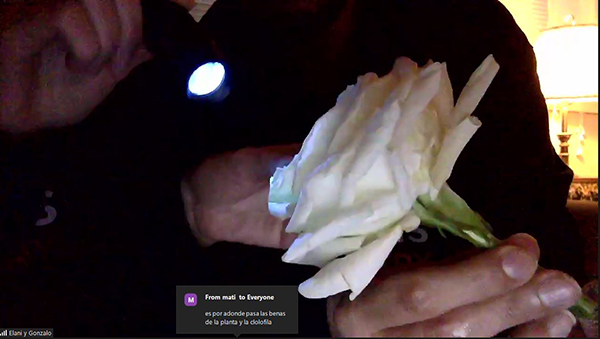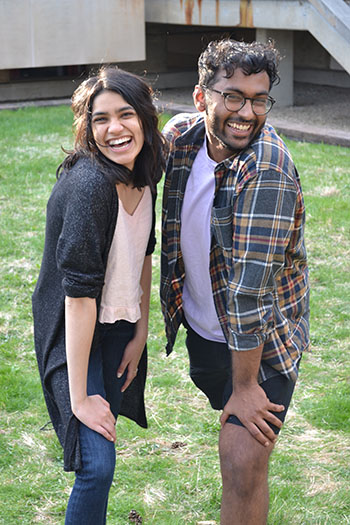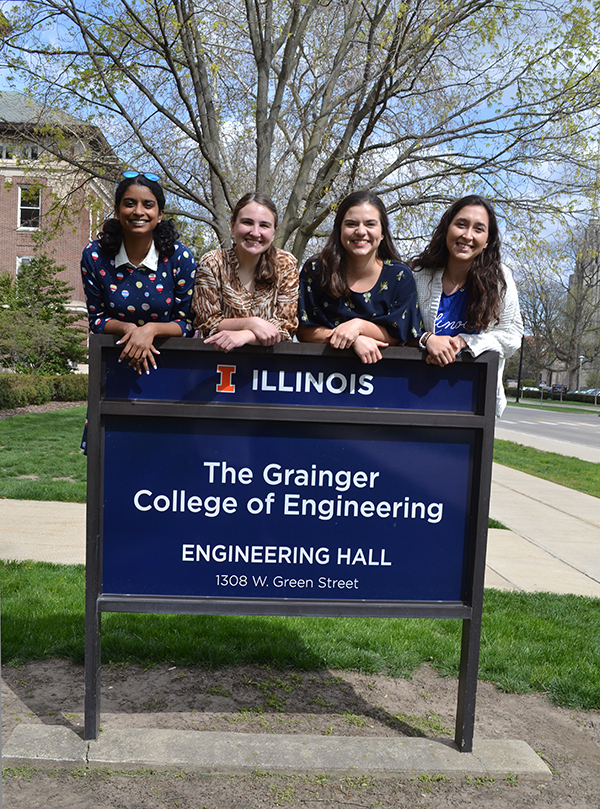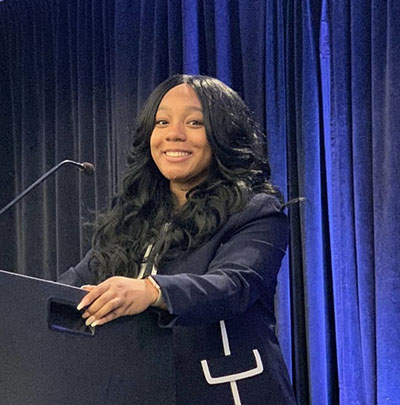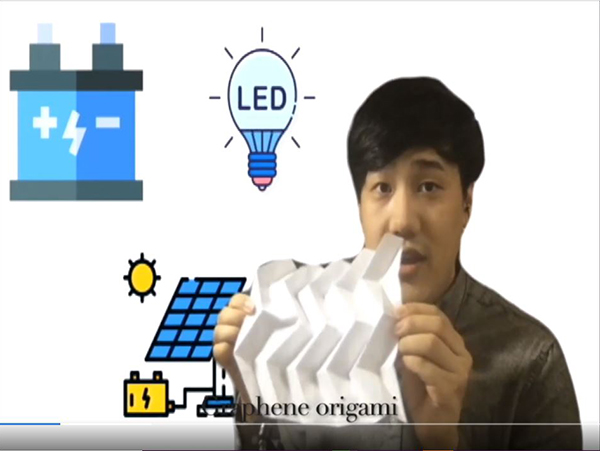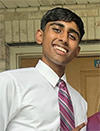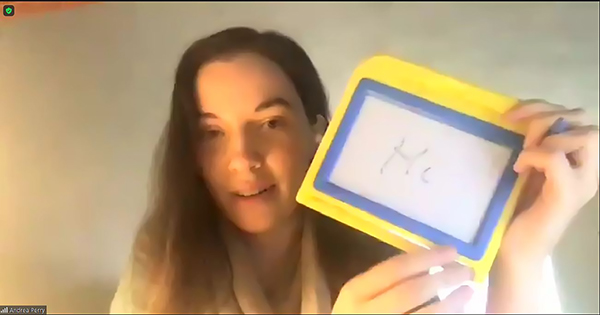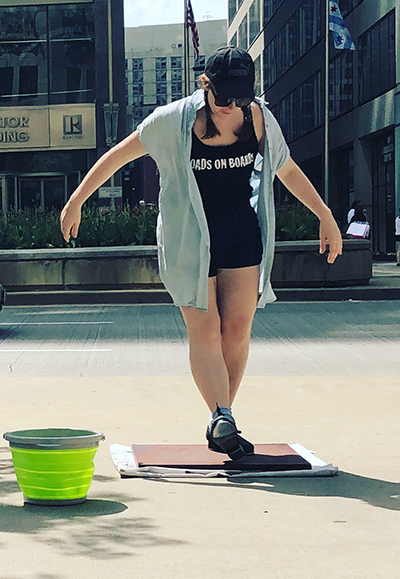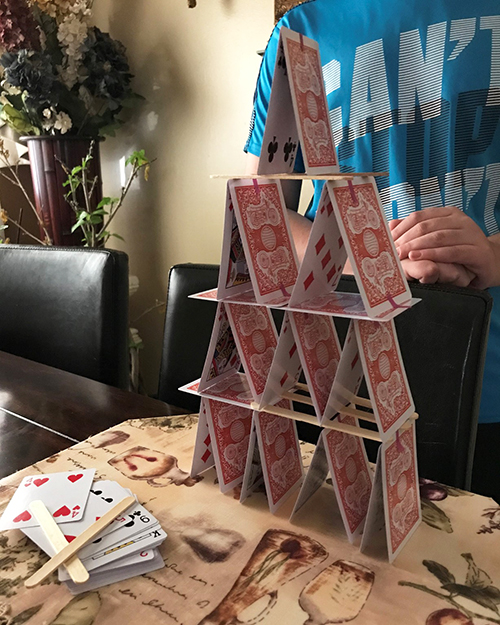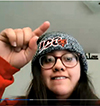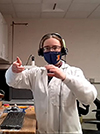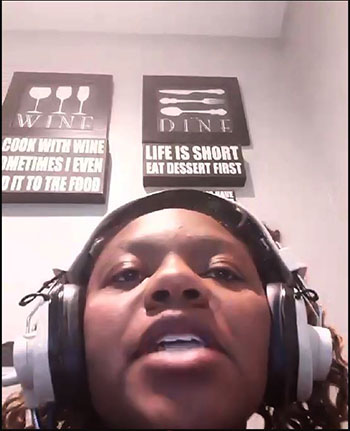Convertibles and Thunderstorms—Children’s-Book-Writing Duo on Their Way Thanks to Illinois Training and Encouragement from Mentors
May 19, 2021
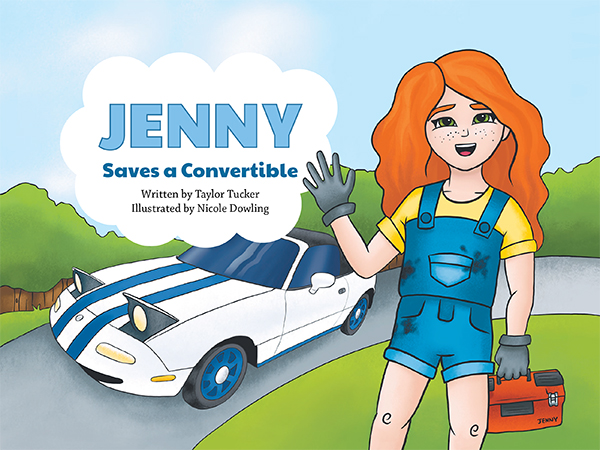
Jenny Saves a Convertible. (Image courtesy of Taylor Tucker.)
When Taylor Tucker arrived at Illinois for a Bachelor’s in Engineering Mechanics, she dreamed of writing a children’s book. Then, she ran into BioE’s Jenny Amos, who encouraged her to pursue her life-long dream. When Nicole Dowling arrived on campus, she dreamed of drawing for a living. So, inspired by Graphic Design’s Eric Benson, who had assigned a project about sustainability, she decided to try a children’s book. Then, thanks to several serendipitous circumstances, the two met, and a children’s-book-writing collaboration was born. Their first book, Jenny Saves a Convertible was about STEM and overcoming adversity. The combination—STEM and overcoming, and even more so Dowling and Tucker—was so successful that their second book will also address STEM and overcoming—this time about a little girl and her fear of thunderstorms. Jenny and the Thunderstorm, perhaps?
Here’s the story behind Jenny Saves a Convertible. In a serendipitous meeting a few years ago, when chatting with Bioengineering Professor Jenny Amos, Taylor Tucker discovered that Engineering Ambassadors, which Amos leads, hoped to produce a STEM children’s book mentors could take into classrooms to use in activities with kids.
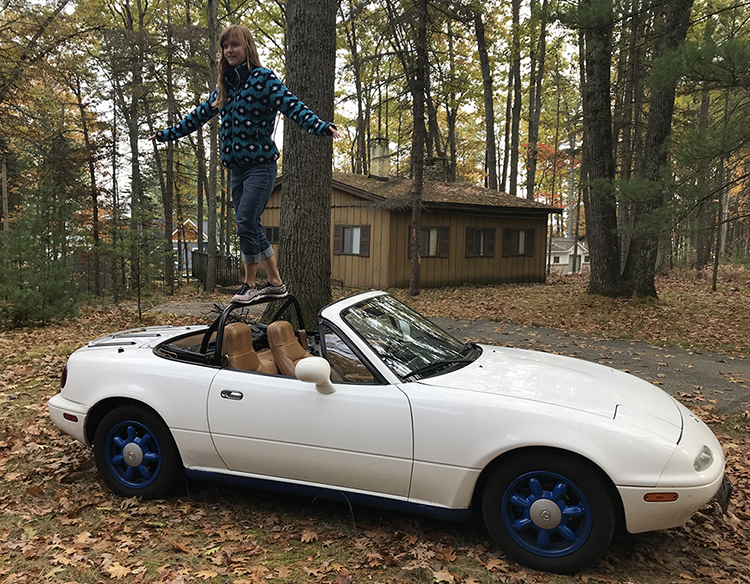
Taylor Tucker and her own convertible.
Since writing a children’s book was her life-long dream, Tucker accepted the challenge. Tucker stresses that she is not the Jenny in the story, but claims, "She is her own entity." However, the car in the book was inspired by the car she drives in real life, and the story is based on the hands-on background in her own life. “Working on engines and fix-it projects from a young age was something I learned from my family,” she explains. Plus, her Engineering Mechanics senior design project was building an eco-marathon race car for the Super Mileage Team. “So, I’ve had automotives in my background outside of school, then I got to dabble in it in school for the senior project.” Thus, the book’s content is focused on automotive mechanics.
“The story line is about a young girl who’s learning to work on cars with her grandpa and dreams of getting her own car—a convertible, of course,” Tucker explains. “She dreams of fixing it up and driving it herself. Of course, she’s pretty young, and in real life, wouldn’t really be driving, but in a story, of course, that’s a space where you can say, ‘I dream of driving, and I’m going to do it, and I will achieve this!’”
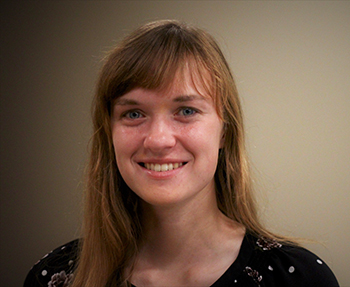
Taylor Tucker.
Regarding the overarching “Go for it!” message, Tucker adds: “I really enjoy reading stories like that, because it just prompts one to think about, ‘What am I capable of doing?’ and ‘What do I want to pursue?’ So, the underlying theme here is really: ‘Be curious about the world around you and pursue your interests!’ but it’s situated in a STEM context as we follow this girl’s experiences working on cars, what she learns along the way, and then we get to see her pursue her own dream as well.”
As to Tucker’s own dream, writing a book for kids, she’s enjoyed writing ever since she learned how. “That has always been a big part of my life,” she admits. “That might sound strange coming from an engineer, but that’s just how I am. My interests are very diverse, and they don’t always seem like they add up, but in my life they do."
Some of Tucker's other very diverse interests, besides engineering, include engineering education research, which she's been pursuing while completing a Master's at Illinois. Plus, she intends to complete a PhD, also at Illinois. And, of course, in all her spare time, she's writing children's books. "I had thought for a long time that I would really enjoy getting to speak to readers through that medium, really sharing a message with younger kids somehow, and that was the interesting part of writing a children’s book for me.”
In fact, years before, she’d told herself she’d love to do that. “‘I’ll just have to wait and see when there’s a good opportunity, because I’m not an illustrator.’ So, I knew I needed to collaborate with somebody that way, and I had no idea how to do it. But it was something where I just said, ‘When the time is right, I’ll do this!’”
Fast forward to 2019, when the time was right. Jenny Amos wanted to produce a children’s book and knew Tucker enjoyed writing. “I was so excited to hear that,” says Tucker, “and just the possibility of being able to collaborate on this!” So, Amos connected her with Nicole Dowling, a senior in Graphic Design who, for her own senior project, had already produced a digital children’s book about how to manage OCD and help young readers learn how to identify and cope with that.
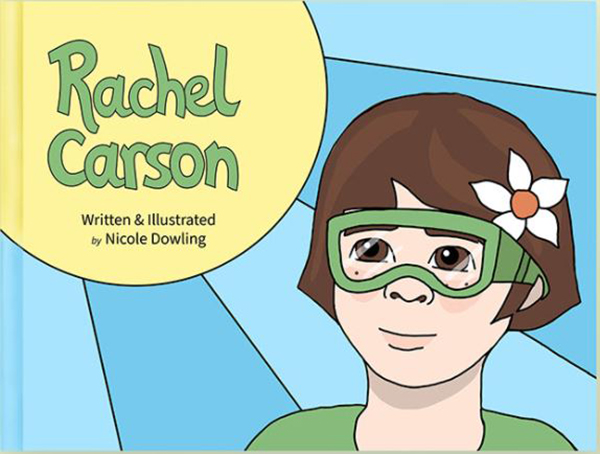
Nicole Dowling's Rachel Carson children's book. (Image taken from the electronic version of the book.)
Did Dowling, like Tucker, also dream of doing children’s books her whole life, or did she just wake up one day and say, “I think I’ll write children’s books and illustrate them!” Neither. Like Tucker, once Dowling arrived at Illinois, she was experiencing her own serendipitous encounters and had her own epiphany. In fact, the two might never have met if it hadn’t been for Eric Benson, a Graphic Design Professor. While Dowling was taking a course with him early on in her career at Illinois, he’d given the class an assignment: “He was very open-ended about it, which I really appreciate,” Dowling recalls. “He just said, ‘Make whatever you want. All that you have to do is make a project that is about the environment and about sustainability.’”
That’s when Dowling began her own adventure in children’s book writing. “So, I decided to try something different,” she recalls. “I had never gotten into children’s books before this, but I thought, ‘You know, let’s try something new and make a children’s book.’ So, I put together a project about Rachel Carson, who kind of started the environmental movement when she wrote Silent Spring.”
So, trying to “spark interest in STEM, especially for young girls,” Dowling wrote Rachel Carson. Benson had liked it a lot. So did Dowling. She shares how the light bulb had come on during Benson’s class.
“I’ve just always loved to draw,” she admits, “and then it kind of clicked when I was given that assignment in Benson’s class. I was like, ‘Oh, I’ve not actually done that. That’s a really great way to implement my love of storytelling and my love of illustration!’ I ended up enjoying it so much. It was a lot of work, even though it was only eight pages or so, my very first one. But I realized I loved it.”
In fact, Dowling loved it so much that she went on to do another book project for her senior capstone project in Graphic Design—a children’s book about obsessive compulsive disorder in kids: Rosie’s Scary Closet. “My minor was in Psychology and my favorite class was the mental health class,” she reports. “So, I got to use some of that research, some of that education. I wrote a story about a little girl overcoming anxiety.”
Being on a huge campus, in disparate fields, how’d the two ever find each other to begin their collaboration? The children’s book genre has their mentors to thank. Back when Benson said he’d really liked Dowling's Rachel Carson book, he really had. Out of the clear blue, a few years after having her in his class, he emailed her, telling her that Taylor Tucker was looking for a partner to work with her on Jenny and to submit her portfolio and just see how it went. (He had most likely heard through the grapevine that Amos needed a children’s book illustrator.) So, Dowling sent Taylor a bunch of illustrations she’d done for her books.
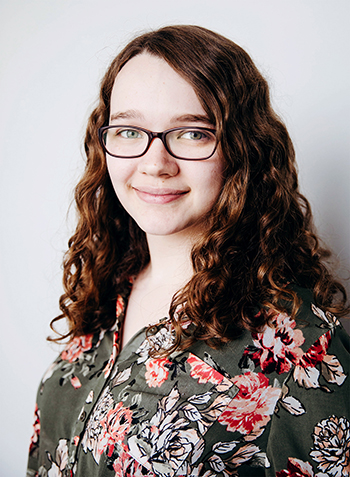
Nicole Dowling
With illustrations being such a key component in children’s books, it might be of interest to take an aside and discover how Dowling does hers. For instance, does she draw them by hand or graphically on a computer? Dowling used to be big into painting, which led to her fine arts background in high school, including an IB painting certificate. However, when she got her first iPad several years ago, her uncle, who just happens to be a Graphic Designer, encouraged her to try Procreate, a digital art software that allows the artist to use a special “pencil” to draw by hand, which she’s been using ever since.
Explaining that it’s a different experience than using pen and paper, she claims one can get as fine a line as with a pencil, plus the resolution (clarity and sharpness) is very high. “What’s nice about digital,” she explains, “is you can actually zoom in as much as you want, as much as the pixel settings allow, which I think makes it easier to get more details.” Also, when doing illustrations this way, the images probably turn out a higher resolution than if she were to draw them by hand and then scan them into digital files. Claiming that drawing digitally is “a lot more freeing,” she cites additional benefits, such as using layers. And, if she doesn’t like what she’s just drawn, she can just hit the undo button!
Plus, she no longer has the mess of mixing up paints and staining the sink when rinsing her palette and brushes, right? Nope. “I still paint,” she admits. “I do still paint. I have an easel actually right next to me. But as far as working on the books, yeah, that’s been digital.”
Dowling has received high praise regarding her illustrations. “I’ve been told I have kind of a Disney style,” Dowling says, then admits. “That’s where I get a lot of my inspiration.” Her response when someone compared her to Disney? “I was like, ‘Wow. Um, I don’t know about that, but that’s cool!’”
So, Dowling sent Taylor her illustrations portfolio, and Taylor liked her style. The two met, and the rest was history. “So, she already had that interest in writing for young readers and had the illustrative experience,” Taylor says of Dowling, “and it was really rewarding getting to meet her and work with her on this. So, the two of us paired up. I had a script; she had the vision for illustrating; and we were able to produce a complete book.”
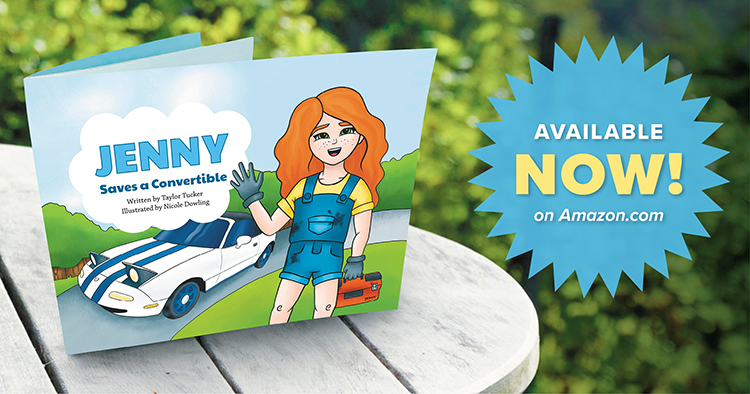
Jenny Saves a Convertible promotional photo. Image courtesy of Nicole Dowling.
Jenny Saves a Convertible was first published through the University of Illinois press on a limited run for Engineering Ambassadors to take into the local schools. After that, to make the book accessible for more people, the two ended up pursuing self-publishing through Amazon. Jenny is currently available now on Amazon. (In fact, this writer just got it for her grandkids!)
But that’s not the end of the story; Tucker and Dowling intend to team up to continue producing children’s books. In fact, the two are working on a second book now. And as in Dowling’s first two books, Rachel Carson and Rosie’s Scary Closet, and their first joint collaboration, “Jenny,” the two have a message that they want to communicate to kids. With Jenny, the content was focused on automotive mechanics, with the underlying narrative: “Be curious about the world around you; pursue your interests; don’t limit yourself,” and was produced for a specific purpose: Engineering Ambassadors. However, their second book doesn’t have any specific boundaries. “Now we’re going to produce one just because we like working together,” Tucker explains. They asked themselves what they really want to say, with Dowling’s background on helping young readers identify and cope with internal issues and Tucker’s STEM background.
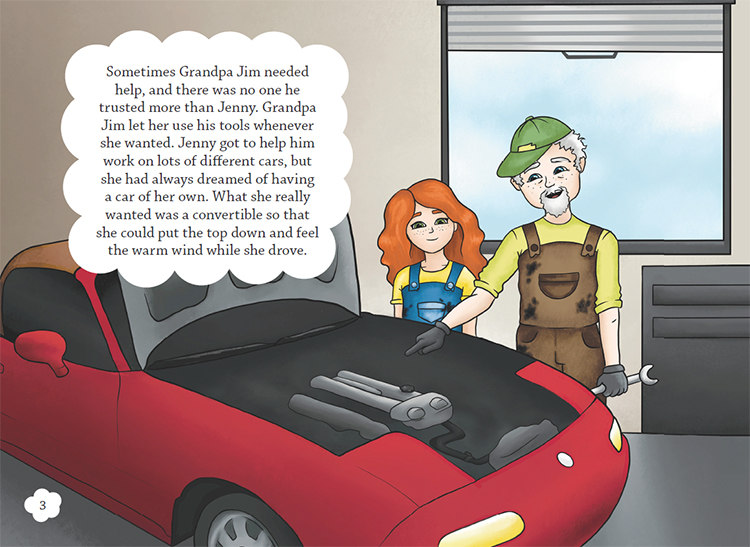
Page 3 of Jenny, where the reader learns of her dream of owning a convertible.
Then, Tucker had an idea inspired by something in her own life from long ago—a happy memory she had with her dad was actually the inspiration for the story, which, because it was weather-related, made a good premise for a book to help children overcome their fear of thunderstorms (and maybe even a parent or two, who probably got the phobia as a child but never overcame it). So, their next book will be about a girl and her dad facing thunderstorms.
“Nicole said, ‘This is a great opportunity to help readers learn how to cope with anxiety,’” Tucker recalls. So, Dowling will bring more of her perspective and contribute to the manuscript, answering, “How do we really get at identifying anxiety, and what would be a good method for coping, and how do we convey this through looking at thunderstorms?” The book will address weather science, with an educational slant that addresses interesting science, like facts about how thunderstorms happen, but will also addresses how to manage anxiety when facing a storm or something scary in one’s life.
(Coincidentally, Dowling’s dad is a planetary scientist. “He’s actually kind of a meteorology expert, my dad,” she explains. “So, he’s going to help us out with some of the scientific angles.” So, with Dowling’s dad, who’s a professor of planetary science, and her mom, who’s a math professor, along with Tucker’s background in engineering, there’s the potential for lots of future books based on a variety of STEM topics.)
“So, this book is more of a passion project for us, really bringing together our different perspectives,” Tucker explains, adding that while the book will be a little different style than the first one, they’re trying to build off the experience gained from producing the first book to produce the second.
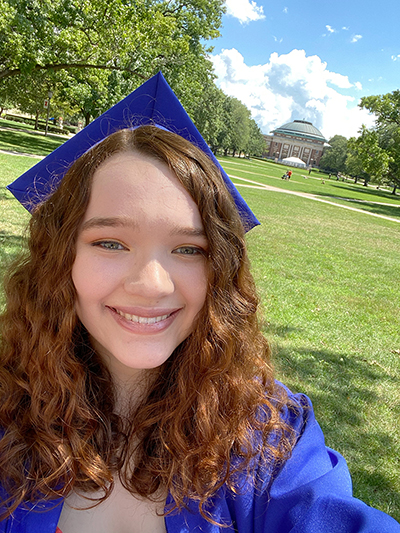
Nicole Dowling at her 2020 Graduation from Illinois. (Image courtesy of Nicole Dowling.)
“So, the books that we’re making—it kind of started with Jenny,” Dowling confirms, “and we see it moving forward with this kind of theme with future books—plural. Our goal is to create stories that inspire children to overcome their fears and setbacks through science and learning...So, our next book is more focused on phobias—overcoming fears.”
Each has really appreciated working with the other. “I have really enjoyed working with her,” Taylor says of Nicole, “and as long as we are able to continue collaborating on the sort of projects, I think we both want to because, it’s like you say, there’s so many possibilities.” She considers STEM to be a relevant topic that’s growing that they’re trying to make more accessible to young people in education, and to pair it with other topics, like coping with anxiety or managing stresses to help with that developmental context. “I think it’s really powerful,” she continues. “As long as Nicole and I are able to work together and continue producing content like this for readers, I think we will want to do that. It has been a really rewarding process. I’ve been very grateful to get to work with her.”
Dowling has also appreciated their partnership. “Taylor is great,” she asserts. “She always had a vision and always knew when to step back. She’s a fantastic writer.” She indicates that the idea for the upcoming book was actually Tucker’s, and that she reached out to Dowling, saying, “Hey, do you want to do this again, ‘cause I have an idea I’ve been dreaming of doing?” “I was so glad that she did,” Dowling claims, “because she’s a really great partner. She’s always got ideas—really smart ideas. I’ll show her things, and she knows when to kind of let me take the lead on things; we have a really great back and forth.”
Plus, what’s great about their collaboration is that, nowadays, everything is so digital that they don’t even have to be in proximity whatsoever. In fact, they began Jenny at the beginning of the second semester of their senior year, in January 2020…right before COVID hit. “So, we actually had to transition to an online only situation after the pandemic hit,” Dowling recalls, “which ended up working out great because we don’t actually live in the same city.”
Dowling wished to express gratitude to all the people who helped her start moving towards that dream, such as her parents and her uncle in Graphic Design. And, of course, there was that serendipitous intervention by Eric Benson, whom she says, “remembered my project a few years later and thought to email me, ‘cause I don’t think I would have heard about the opportunity otherwise.”
Writing children’s books has always been Tucker’s dream. What about Dowling? For her, it was always about the illustrations, “I think if I could make my living off of illustrating children’s books, that would make me very happy,” she acknowledges. “That would be the dream, I think.” So now, thanks to several happy coincidences, Dowling is also working toward making that dream a reality. “That’s the dream. Yeah,” agrees Dowling. “But even if it doesn’t, it gives me joy after hours.”
Story and photos by Elizabeth Innes, Communications Specialist, I-STEM Education Initiative
More: Engineering, MechSE, Illinois Legacies, Women in STEM, 2021
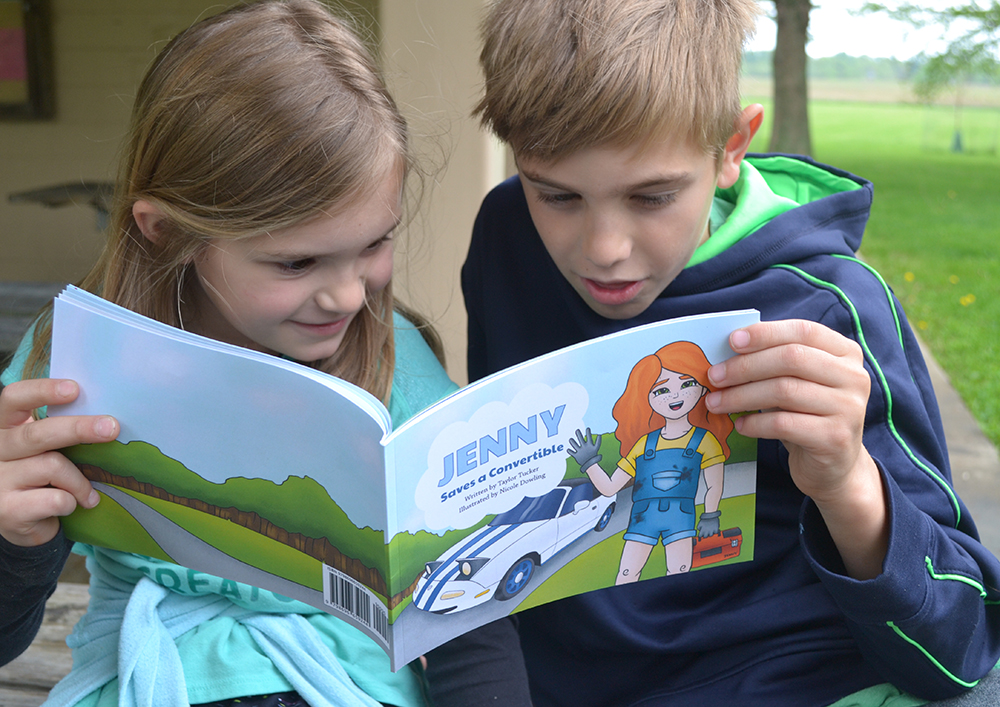
Two local kids enjoying Jenny Saves a Convertible.
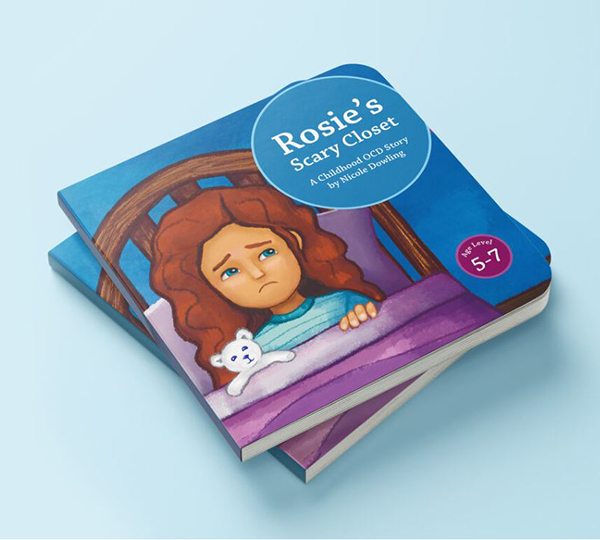
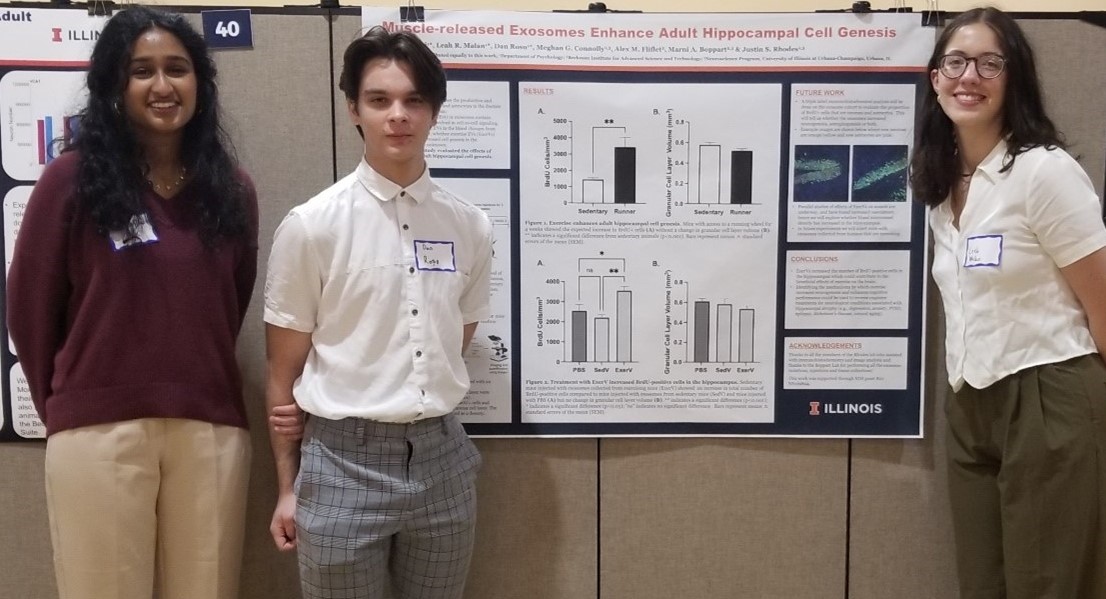
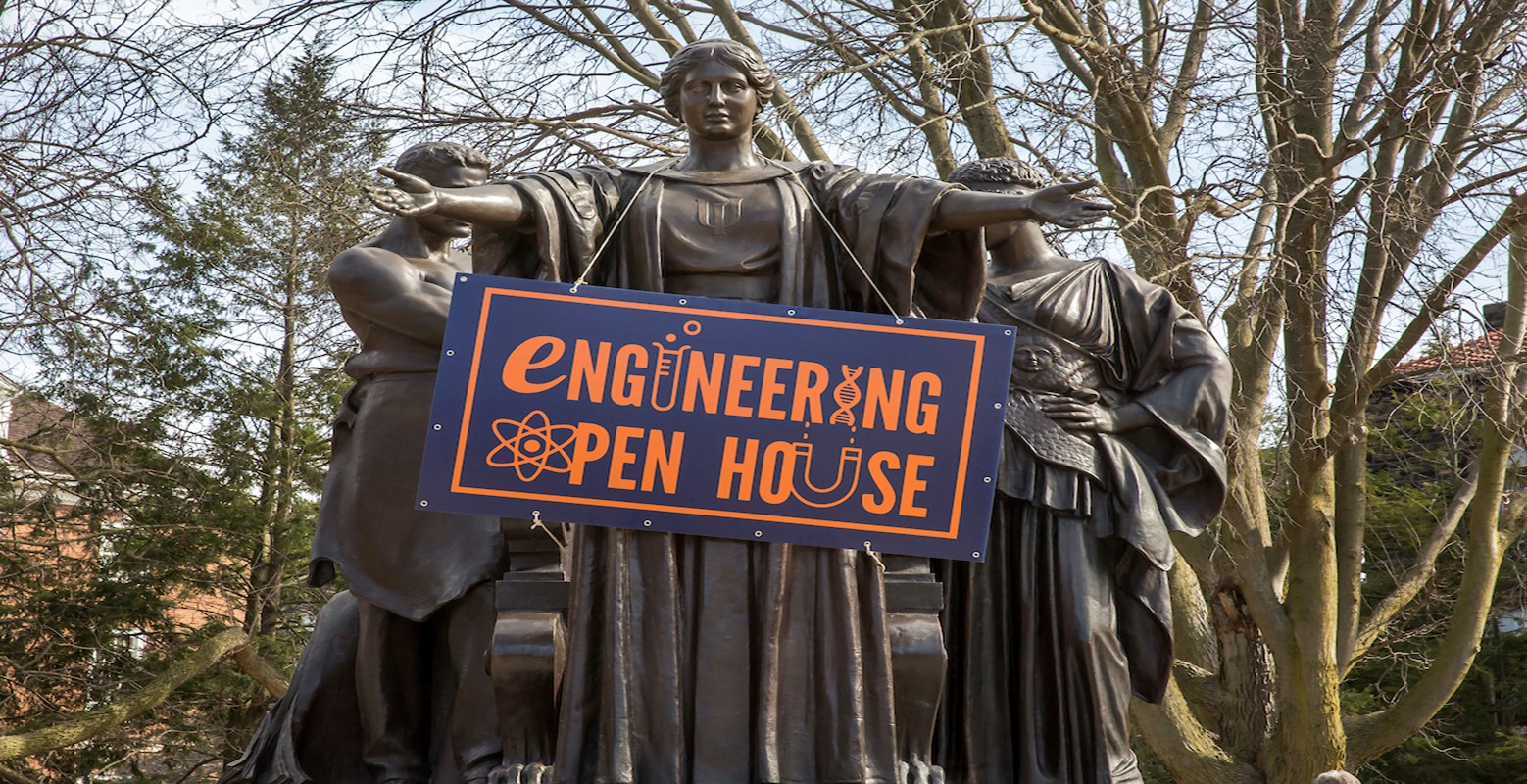
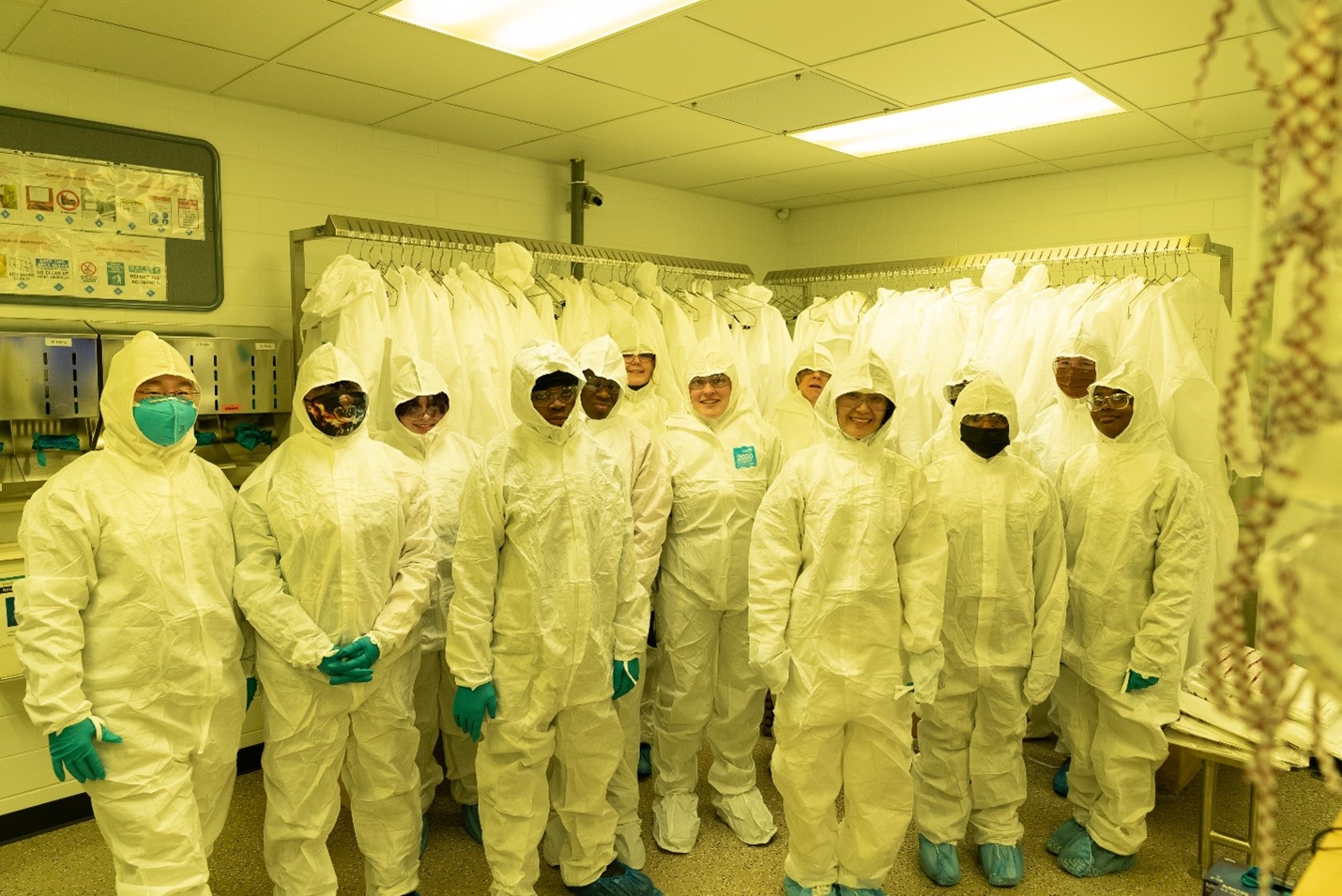
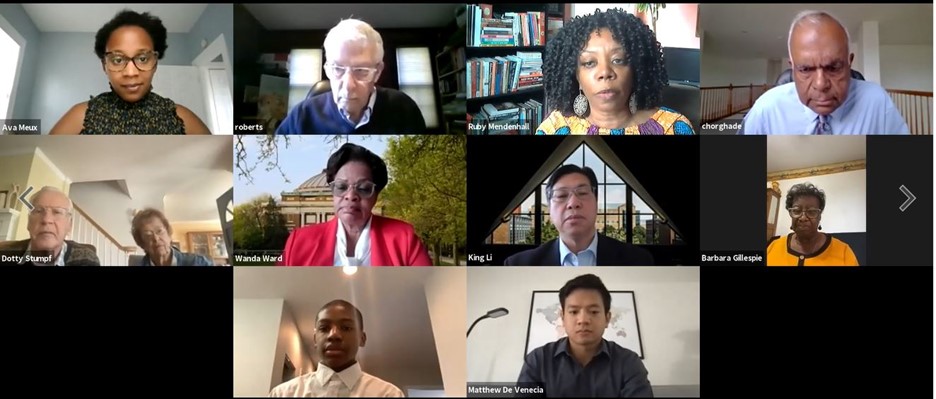
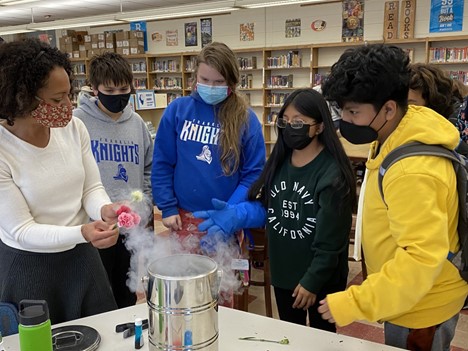
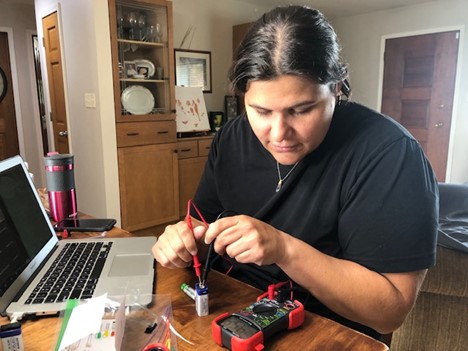
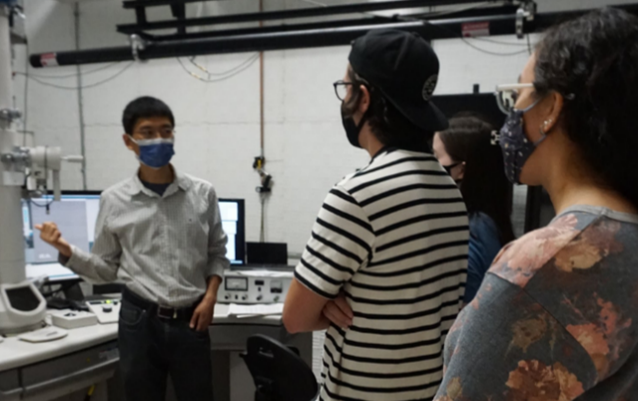
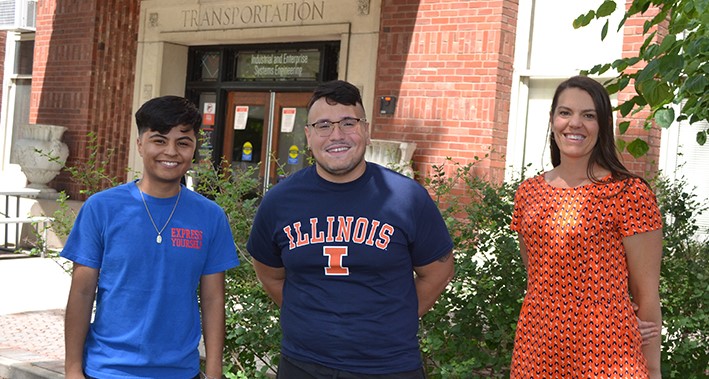
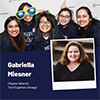

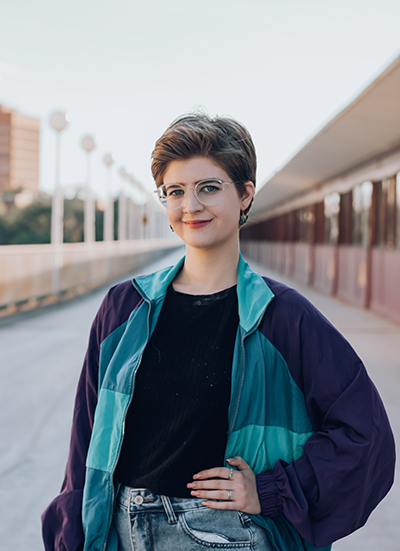
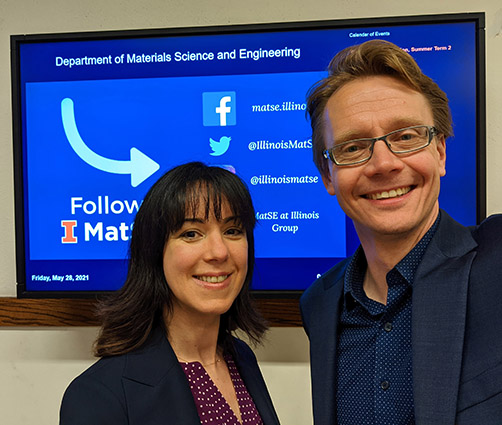

.jpg)

